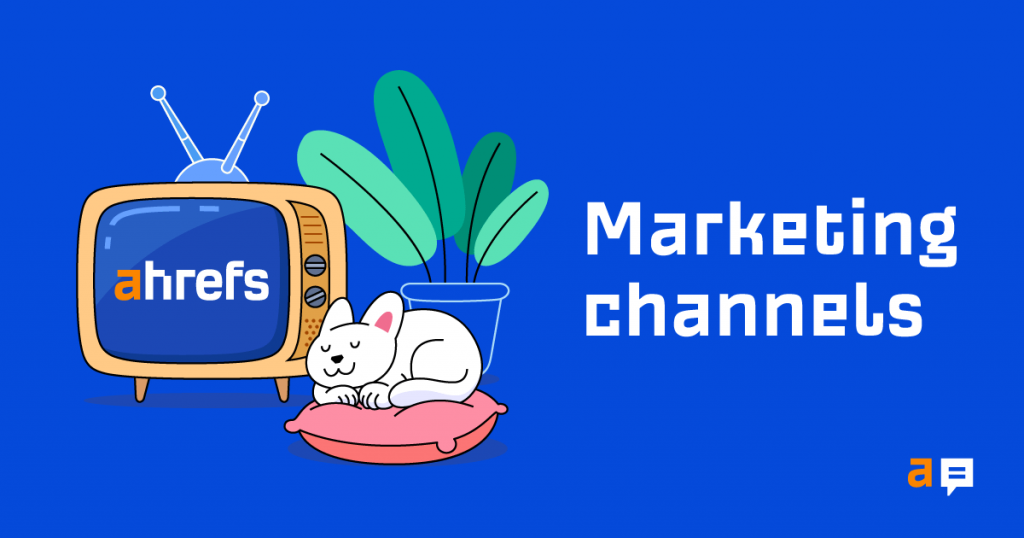[ad_1]
Marketing channels are tools and platforms that you use to communicate with a target audience.
In today’s world of digital media dominance and consumers turning prosumers, marketing needs to employ an omnichannel marketing strategy. That means all of the marketing channels you can think of must work together to create a seamless experience.
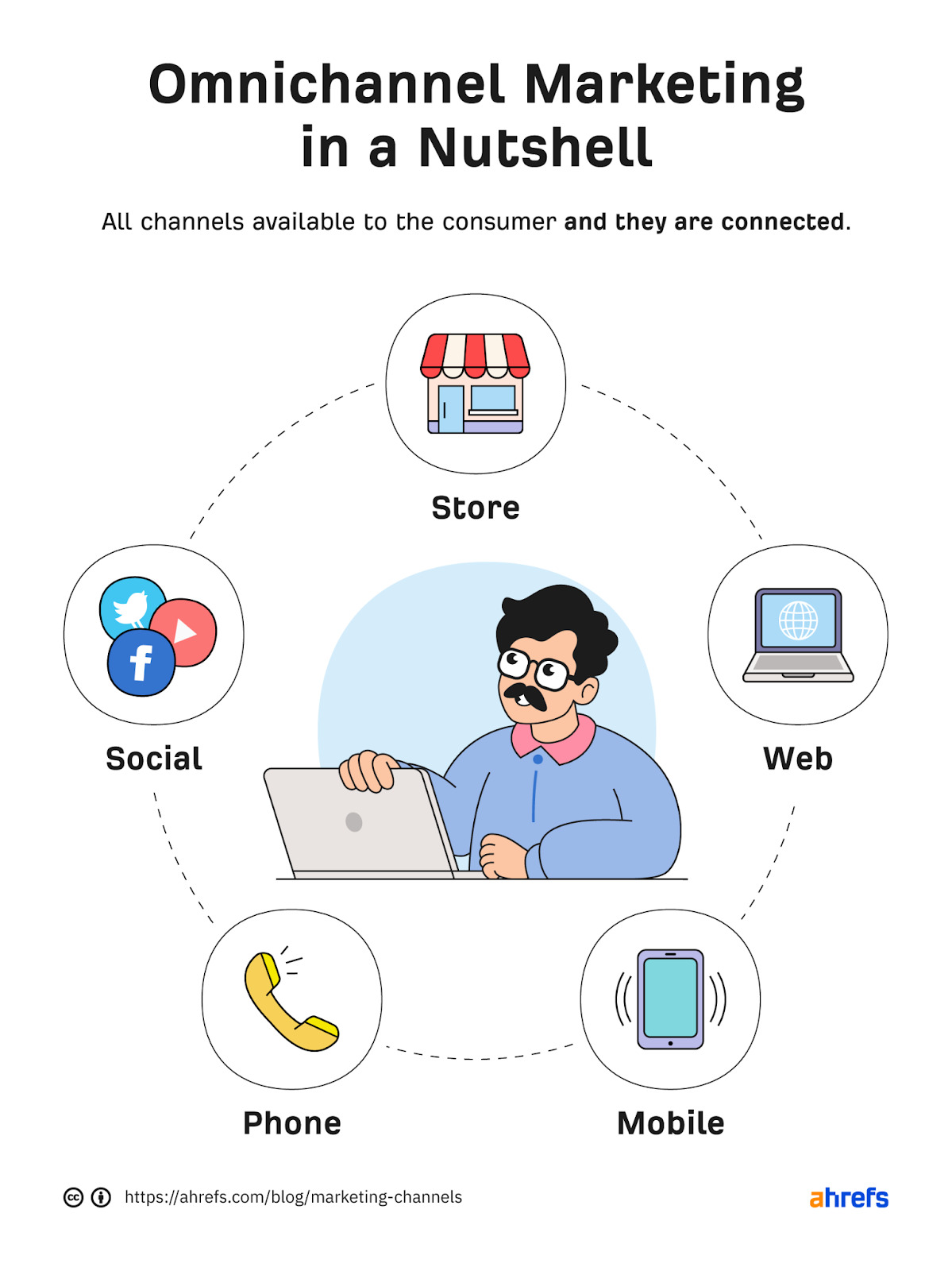
In this article, I’m going to walk you through eight effective marketing channels that helped us grow into an eight-figure ARR company. We’ll cover:
Organic search refers to the non-paid search results from a search engine. This marketing channel generates visitors whenever someone clicks a link on a search engine result page (SERP) pointing to a site.
The practice of optimizing a website or webpage to increase the quantity and quality of its traffic from a search engine’s organic results is called search engine optimization (SEO).
Works best when:
- There is search demand for topics related to your business.
- You treat SEO as a process. To get the best results, you need to cover each step from keyword research, through link building, to technical SEO.
- You do SEO systematically and continuously. The more you do it, the more effective it becomes and easier to get results.
| Pros | Cons |
|---|---|
| Almost free, continuous traffic. | Ranking high in search engines takes time. |
| Compounding effects. A blog post written four years ago can still get you traffic and will get you traffic in the future as long as you rank high. | Lots of uncertainty (e.g., fluctuating SERP rankings, search algorithm updates). |
| Can be used to attract, educate, convert, and retain your customers. In other words, SEO content can influence the entire marketing funnel. | Slower effects for newcomers, i.e., websites with a small number of high-quality backlinks and low topical authority. |
| Relies more on quality and creativity than budget. | ROI of SEO and content marketing can be difficult to measure. |
| Qualifies potential customers through their search intent. | |
| The more you do it, the easier it becomes to rank high. |
How we use it
Organic search is one of our top three customer acquisition channels. But in terms of where our marketing team puts most of its efforts, this channel has the highest priority.
Our example here will be blogging. We create blog posts about relevant topics that people search for on Google. Very simple strategy, yet very effective.
By keeping our content product-led, we can benefit from all of the advantages of organic search as a channel.
Publishing product-led content means that apart from having solid traffic potential, topics that we write about should allow us to feature our product. The intersection of search demand and business value is the sweet spot.
One of the great things about using content as a marketing tool is that it can be efficient in terms of influencing the marketing funnel. Namely, one article can serve multiple purposes.
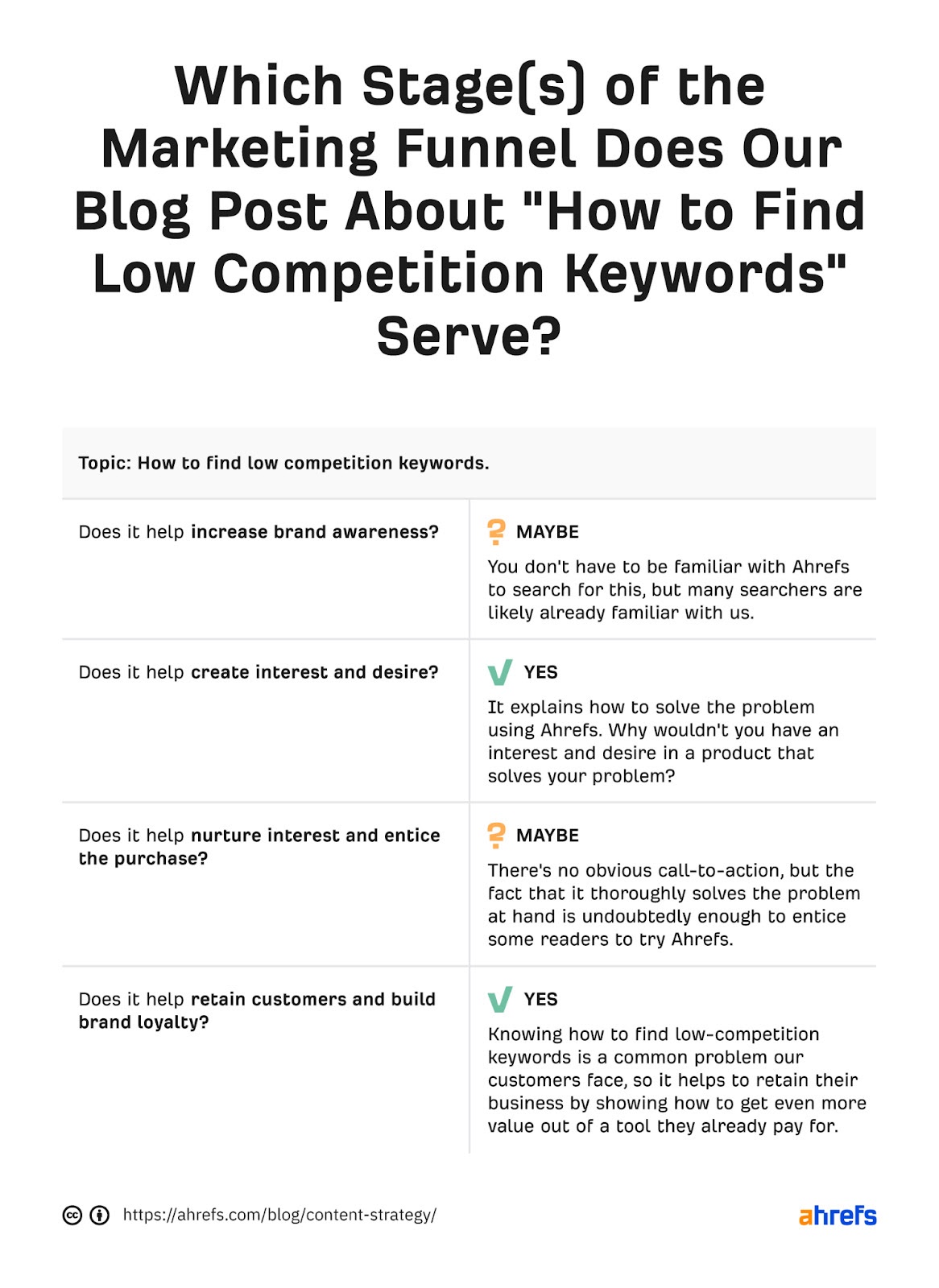
Following this strategy, article after article, our blog grew to be one of the most prominent blogs about SEO in a few years. This brings us a compounding stream of traffic.
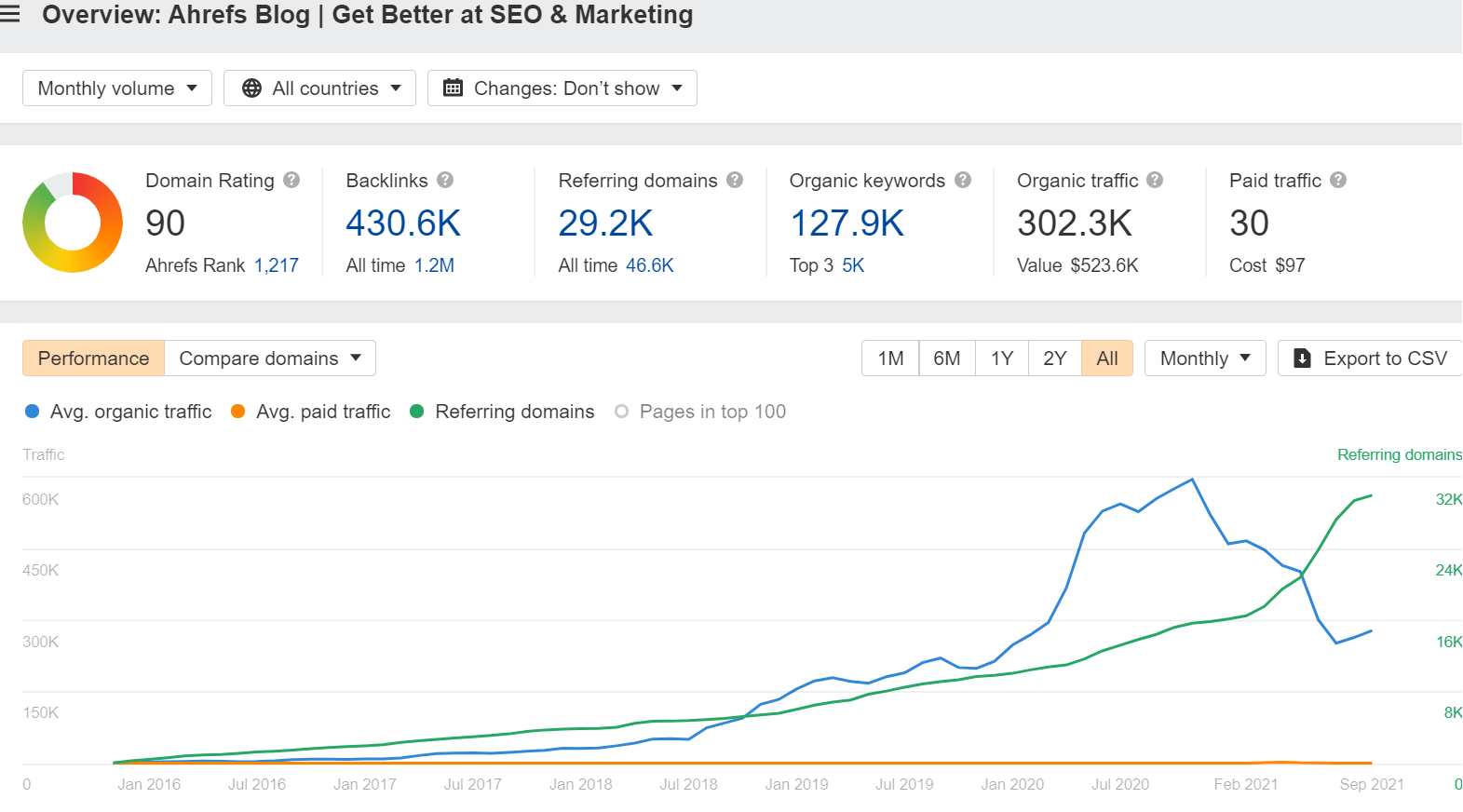
This marketing channel allows you to distribute your content and ads in a video format.
Works best when:
- You design your videos with distribution in mind. You can base your topics on Google and YouTube keyword research and/or secure a budget for promoting them through paid traffic.
- You can repurpose your videos in many outlets. This way, you can get extra mileage out of your investment in creating quality videos. It works the other way around too; you can repurpose your written content into videos.
- You have the expertise and resources to produce high-quality videos.
| Pros | Cons |
|---|---|
| A picture paints a thousand words. If your product is easier shown than explained, consider creating videos about it. | Can be quite resource-heavy (time, people, money). |
| Can be more engaging than written content. Video is great at grabbing attention. | Harder to update than written content. |
| Can be distributed on many different platforms. |
How we use it
Our YouTube channel is a core element of our content marketing strategy.
Within three years, we’ve published 181 videos. Such output is only possible with a dedicated person for that marketing channel (and that’s Sam).
Similar to our blog, we keep our videos business-oriented. Most videos show how Ahrefs can solve common SEO and marketing problems.
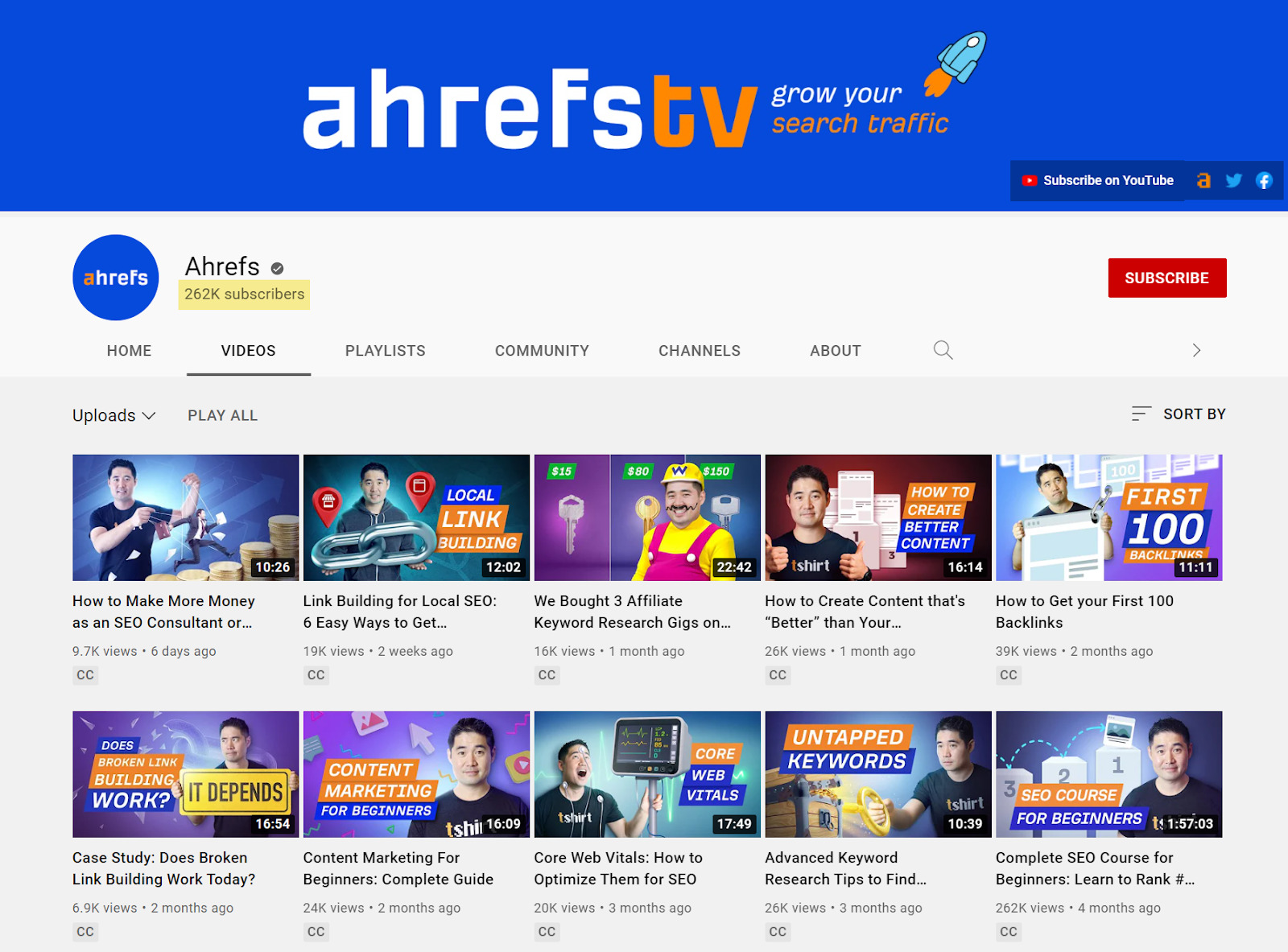
But no content marketing strategy is complete without content repurposing. We republish our videos in relevant places throughout our webpages. Sometimes our existing videos are perfect companions to blog posts, giving the videos “another life” and additional views.
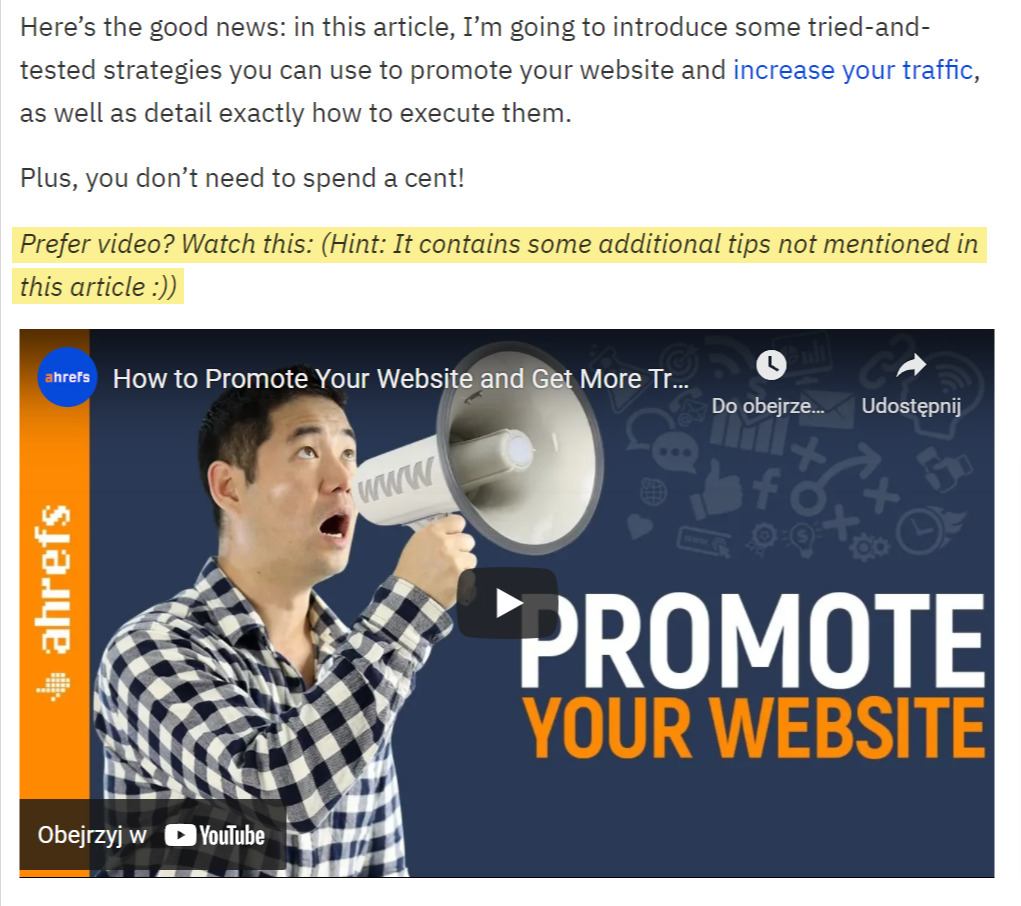
Other times, we “repackage” videos into different forms, such as a full Ahrefs course on marketing.

Not only can you generate more views for your videos this way, but you can also reach different audiences.
Social media drives traffic to your webpages and creates engagement with your brand by means of social media platforms.
Social media is not just Facebook, Twitter, or LinkedIn. Messaging-only apps like Discord, Slack, and Whatsapp also fall into the same channel category.
Works best when:
- Your target audience actually uses social media to communicate with brands.
- You have the resources to constantly monitor social media platforms and create dedicated, likable content for them.
- You are prepared to receive (and handle) negative feedback publicly.
- You develop a consistent “voice” and “personality” while engaging with your audience.
| Pros | Cons |
|---|---|
| Allows you to interact directly with your audience. | Makes you vulnerable to negative comments and “trolls.” |
| Takes advantage of massive audiences gathered around social media platforms. | Depending on the social media platform, keeping consistent results may become resource-heavy. |
| Enhances customer support. | Many social media platforms incentivize businesses to spend on ads by decreasing organic reach. |
| Can be used as a channel for content repurposing. | |
| Allows you to run social media PPC campaigns. | |
| Can induce brand loyalty. | |
| Allows you to leverage on influencers. |
How we use it
Social media offers a broad set of possibilities. Here’s how we use it for promotion purposes.
While open self-promotion is not always welcome on social media, it’s still fine to do it from time to time. And if you’ve got a sweet deal like a free premium SEO tool, you can even pin the pin that promotes it:
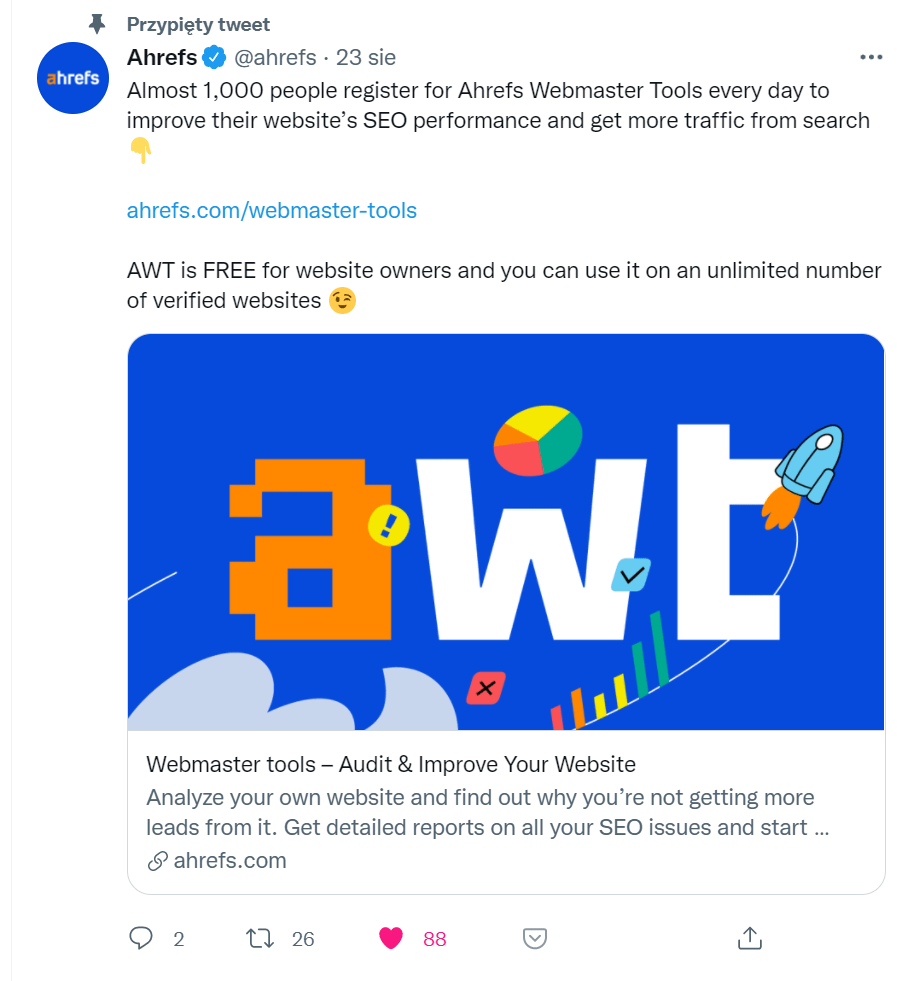
And if your customers appreciate being updated on product news, as ours do, this next example of auto-promotion is more than welcome.
Almost 1,000 people register for Ahrefs Webmaster Tools every day to improve their website’s SEO performance and get more traffic from search 👇https://t.co/WESA9JI2Uz
AWT is FREE for website owners and you can use it on an unlimited number of verified websites 😉
— Ahrefs (@ahrefs) August 23, 2021
The idea of digital advertising is to reach your target audience on websites that offer advertising space.
Digital advertising comes in many shapes and sizes. Some online ads can instantly cover your entire viewport. Others are more subtle “nudges” posted in places where you need them the most.
Works best when:
- You can afford to run campaigns long enough to identify how to get the most out of them.
- You advertise to an audience that is aware of your brand or at least has an awareness of the problem your company solves.
- You work out a dependable model of attribution.
- Your landing page delivers what the ad promises.
- Your offer actually fits your target audience. Some ads will be ineffective because of how they are designed, and some will fail because the offer turned out to be unattractive.
| Pros | Cons |
|---|---|
| Fast way to get traffic. You can start fast and get results fast. | Suffers from symptoms like ad fatigue and banner blindness. |
| Allows for specific targeting. | Increasing use of ad blocks and default third-party cookies blocking by web browsers. |
| Can be used to promote anything: product, content, or the brand itself. | Arguably the most expensive way to get your message across online. |
| Easy to measure, control, and scale. | Showing too many ads with too persuasive content can compromise your brand. |
| Wide range of ad formats and advertising platforms. | |
| Can be used to test hypotheses, e.g., the best converting value proposition of a product. |
How we use it
Digital advertising is an auxiliary source of traffic in Ahrefs’ omnichannel strategy. Thanks to PPC ads, we can reach people we haven’t reached before and/or create another touchpoint with the people who are already aware of our brand.
Here is an example of ads used to promote content.

When it comes to directly promoting our products, we usually go with promoting our free tools. The less friction on the landing page, the more effective the campaign. Besides, some users of our free tools upgrade their plans and become paid customers.
Email marketing lets you reach your prospects’ mailboxes with messages that either prompt direct action or are aimed at creating a long-term relationship with the brand.
Works best when:
- You don’t overdo it and keep a consistent schedule.
- Your emails are engaging and offer unique value.
- Marketers practice email personalization based on behavioral data.
- Your emails are visually appealing. On the other hand, if you’re serving mostly educational content, they can be pretty basic.
- You measure results, iterate, and curate your email list.
| Pros | Cons |
|---|---|
| Can be highly personalized and segmented. | Takes time to organically (and legally) build a quality email list. |
| Fast way to reach your collected audience. | If you overdo it, you can break email marketing legislation (GDPR, CAN-SPAM). |
| To some marketers, email is a cost-effective channel. Most email marketing platforms allow you to “pay as you grow.” | Difficult to break through hundreds of other emails and get attention. |
| Easy to measure. | |
| Affordable way to conduct lead nurturing campaigns and many types of ecommerce campaigns. | |
| Shareable, which means you can get additional eyes on your message. |
How we use it
As you’re reading this, there is a floating widget to the right offering you to subscribe for weekly updates (if you’re on a mobile device, that widget will be at the bottom of this post). This widget is the only way we collect emails for our newsletter. No pop-ups; no additional incentives.
The deal is simple. If you like our content, we can deliver it to your mailbox every week so that you don’t need to move a finger to get it.
We keep our newsletter format simple. It’s focused on delivering a particular week’s articles from Ahrefs and the editor’s picks of great reads outside of our blog.
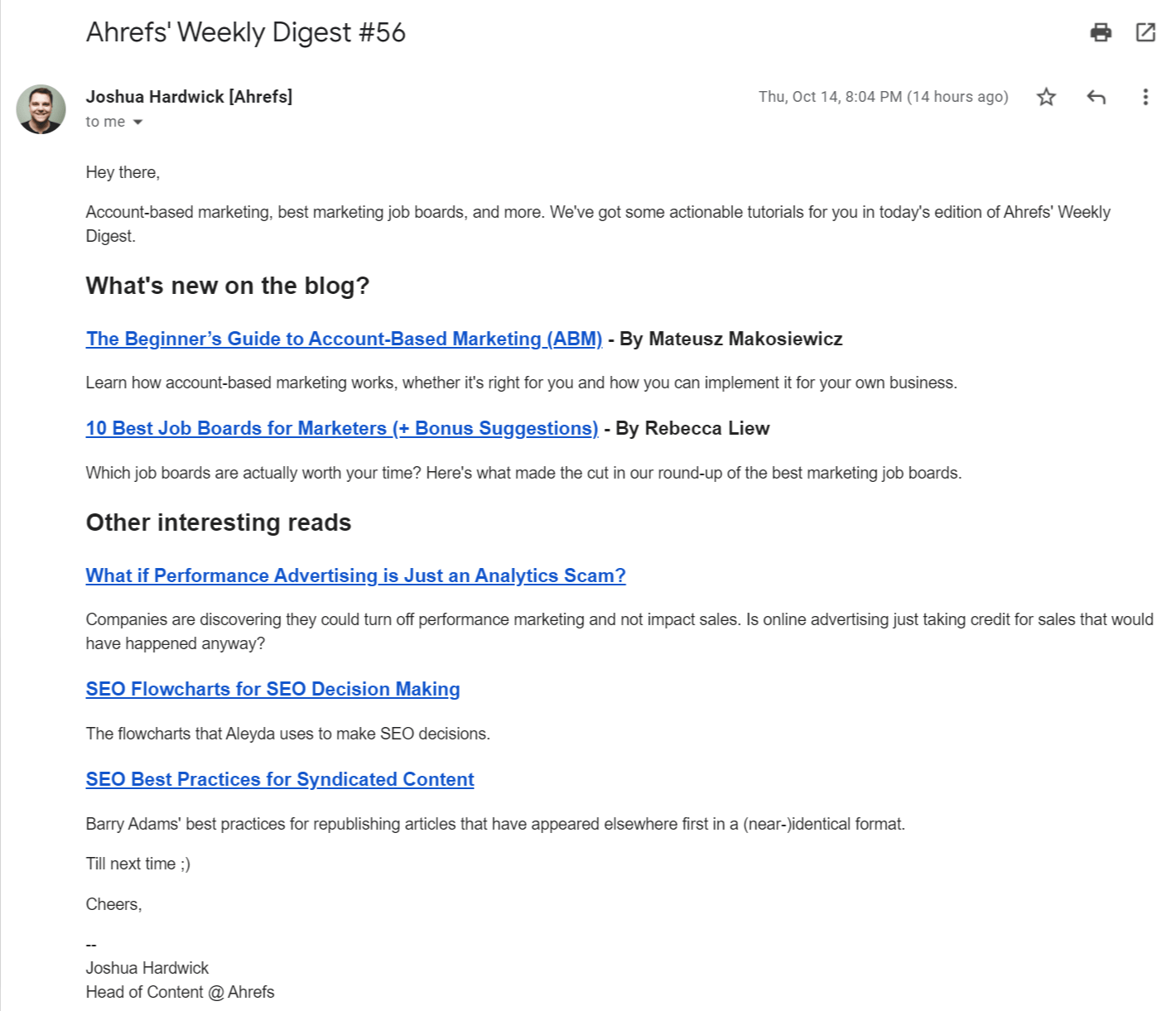
Sponsorships as a marketing channel consist of all prospects coming to your business through exposure to your brand in a sponsored material or event.
Works best when:
- The thing/person you fund is something that your target audience cares about. In most cases, companies choose to sponsor events attended by their target audience.
- It’s used for two kinds of goals: brand awareness and brand image (i.e., gaining customers’ trust).
- The goal is long term.
| Pros | Cons |
|---|---|
| Can greatly increase brand awareness in a short time. | Limited control. Risk of unwanted brand associations if you sponsor the wrong event or person. |
| Can raise your company’s profile. | No guaranteed returns. |
| Sometimes allows for precise targeting (e.g., Ahrefs sponsoring an SEO conference). | ROI is hard to measure. |
| An opportunity for personal engagement with your target audience and others in the industry. |
How we use it
Brand awareness, mostly. The goal of employing sponsorships for brand awareness is to “imprint” the brand in the minds of listeners using a positive association.
You can see we do sponsor a number of podcasts or videos like this one:
https://www.youtube.com/watch?v=HLqM3LJ2Ses
Aside from podcasts and videos, we often sponsor industry events like the BrightonSEO, where you can get a hold of our “swag.” That also translates to brand awareness. Additionally, it allows us to…
[ad_2]
